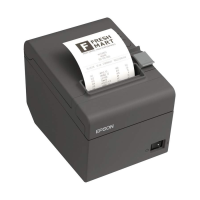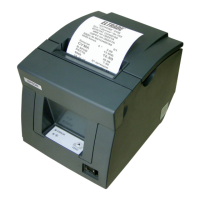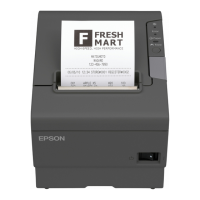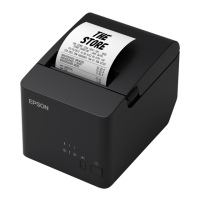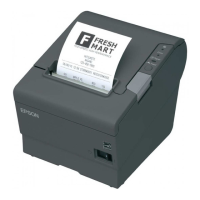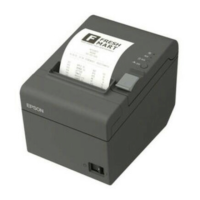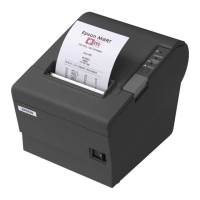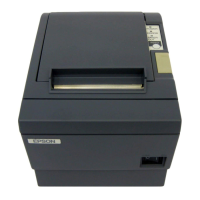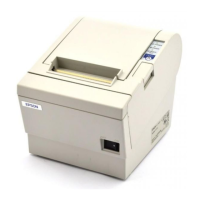Commands 5-5
ESC %
n
[Name] Select/cancel user-defined character set
[Format] ASCII ESC %
n
Hex 1B 25
n
Decimal 27 37
n
[Range] 0 ≤
n
≤ 255
[Description] Selects or cancels the user-defined character set.
• When the LSB is 0, the user-defined character set is canceled
and the internal character set is selected.
• When the LSB is 1, the user-defined character set is selected.
ESC &
y c1 c2 [x1 d1...d(y
×
x1)]...[xk d1...d(y
×
xk)]
[Name] Define user-defined characters
[Format] ASCII ESC &
y c1 c2 [x1 d1...d(y
×
x1)]...
[xk d1...d(y
×
xk)]
Hex 1B 26
y c1 c2 [x1 d1...d(y
×
x1)]...
[xk d1...d(y
×
xk)]
Decimal 27 38
y c1 c2 [x1 d1...d(y
×
x1)]...
[xk d1...d(y
×
xk)]
[Range]
y
= 3
32
≤
c1
≤
c2
≤
126
0 ≤
x
≤ 12 Font A (12
×
24)
0 ≤
x
≤ 9 Font B (9
×
24)
0 ≤
d1 ... d(y
×
xk)
≤ 255
[Description] Defines user-defined characters.
•
y
specifies the number of bytes in the vertical direction.
•
c1
specifies the beginning character code for the definition, and
c2
specifies the final code.
•
x
specifies the number of dots in the horizontal direction.
•
d
is the dot data for the characters. The dot pattern is in the
horizontal direction from the left side. Any remaining dots on
the right side are blank.
• The allowable character code range is from ASCII code
20H(32) to 7EH(126).
• The data to define a user-defined character is
(y
×
x) bytes.
• Set a corresponding bit to 1 to print a dot or 0 to not print a dot.
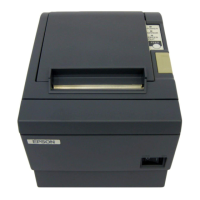
